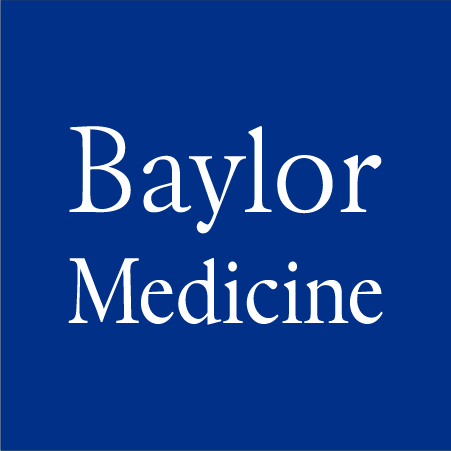Authors
Barbara Savoldo, Center for Cell and Gene Therapy, Department of Pediatrics, Baylor College of Medicine, The Methodist Hospital and Texas Children's Hospital, Houston, TX
John A. Goss, Center for Cell and Gene Therapy, Department of Pediatrics, Baylor College of Medicine, The Methodist Hospital and Texas Children's Hospital, Houston, TX
Markus M. Hammer, Center for Cell and Gene Therapy, Department of Pediatrics, Baylor College of Medicine, The Methodist Hospital and Texas Children's Hospital, Houston, TX
Lan Zhang, Center for Cell and Gene Therapy, Department of Pediatrics, Baylor College of Medicine, The Methodist Hospital and Texas Children's Hospital, Houston, TX
Teresita Lopez, Center for Cell and Gene Therapy, Department of Pediatrics, Baylor College of Medicine, The Methodist Hospital and Texas Children's Hospital, Houston, TX
Adrian P. Gee, Center for Cell and Gene Therapy, Department of Pediatrics, Baylor College of Medicine, The Methodist Hospital and Texas Children's Hospital, Houston, TX
Yu-Feng Lin, Center for Cell and Gene Therapy, Department of Pediatrics, Baylor College of Medicine, The Methodist Hospital and Texas Children's Hospital, Houston, TX
Ruben E. Quiros-Tejeira, Center for Cell and Gene Therapy, Department of Pediatrics, Baylor College of Medicine, The Methodist Hospital and Texas Children's Hospital, Houston, TX
Petra Reinke, Center for Cell and Gene Therapy, Department of Pediatrics, Baylor College of Medicine, The Methodist Hospital and Texas Children's Hospital, Houston, TX
Stephan Schubert, Center for Cell and Gene Therapy, Department of Pediatrics, Baylor College of Medicine, The Methodist Hospital and Texas Children's Hospital, Houston, TX
Stephen Gottschalk, Center for Cell and Gene Therapy, Department of Pediatrics, Baylor College of Medicine, The Methodist Hospital and Texas Children's Hospital, Houston, TX
Milton J. Finegold, Center for Cell and Gene Therapy, Department of Pediatrics, Baylor College of Medicine, The Methodist Hospital and Texas Children's Hospital, Houston, TX
Malcolm K. Brenner, Center for Cell and Gene Therapy, Department of Pediatrics, Baylor College of Medicine, The Methodist Hospital and Texas Children's Hospital, Houston, TX
Cliona M. Rooney, Center for Cell and Gene Therapy, Department of Pediatrics, Baylor College of Medicine, The Methodist Hospital and Texas Children's Hospital, Houston, TX
Helen E. Heslop, Center for Cell and Gene Therapy, Department of Pediatrics, Baylor College of Medicine, The Methodist Hospital and Texas Children's Hospital, Houston, TX
Publication Date
11-1-2006
DOI
10.1182/blood-2006-05-021782
PubMedCentral® Posted Date
July 2006
PubMedCentral® Full Text Version
Post-print
Abstract
We have investigated the in vivo safety, efficacy, and persistence of autologous Epstein Barr virus (EBV)-specific cytotoxic T lymphocytes (CTLs) for the treatment of solid organ transplant (SOT) recipients at high risk for EBV-associated posttransplantation lymphoproliferative disease (PTLD). EBV-CTLs generated from 35 patients expanded with normal kinetics contained both CD8 and CD4 lymphocytes and produced significant specific killing of autologous EBV-transformed B lymphoblastoid cell lines (LCLs). Twelve SOT recipients at high risk for PTLD, or with active disease, received autologous CTL infusions without toxicity. Real-time polymerase chain reaction (PCR) monitoring of EBV-DNA showed a transient increase in plasma EBV-DNA suggestive of lysis of EBV-infected cells, although there was no consistent decrease in virus load in peripheral-blood mononuclear cells. Interferon-gamma enzyme-linked immunospot (ELISPOT) assay and tetramer analysis showed an increase in the frequency of EBV-responsive T cells, which returned to preinfusion levels after 2 to 6 months. None of the treated patients developed PTLD. One patient with liver PTLD showed a complete response, and one with ocular disease has had a partial response stable for over one year. These data are consistent with an expansion and persistence of adoptively transferred EBV-CTLs that is limited in the presence of continued immunosuppression but that nonetheless produces clinically useful antiviral activity.
Keywords
Antigens, Viral, Child, Preschool, Female, Graft Rejection, Herpesvirus 4, Human, Humans, Infant, Lymphocyte Transfusion, Male, Retrospective Studies, T-Lymphocytes, Cytotoxic, Transplantation Immunology, Transplantation, Autologous
Published Open-Access
yes
Recommended Citation
Savoldo, Barbara; Goss, John A.; Hammer, Markus M.; et al., "Treatment of Solid Organ Transplant Recipients With Autologous Epstein Barr Virus-Specific Cytotoxic T Lymphocytes (CTLs)" (2006). Faculty and Staff Publications. 3.
https://digitalcommons.library.tmc.edu/baylor_docs/3


